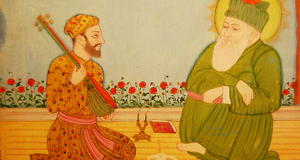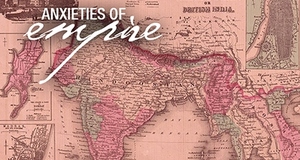From Jalaluddin to Akbar: Analyzing the Akbarid Notion of Kingship
By
2016, Vol. 8 No. 01 | pg. 1/4 | »
IN THIS ARTICLE
KEYWORDS
Jalaluddin Mohammad Akbar is placed among the elite few in history; he is amongst the “Great”1. Popularly known for his liberal policies and just administration, he is remembered widely as an ideal ruler. It is almost dangerous, thus, to analyse any of his aspects of kingship–many of which are rhetoric for the masses today. His populist policies made him popular during his reign, and even today, continue to keep him alive as an epitome of leadership. It is thus an important task, I claim, to look into what it is that elevated Jalaluddin Mohammad to the status of Akbar (great)2. John F. Richards writes This paper looks at the salient features of his notions of kingship. The basic thesis is that his image as a liberal-populist monarch was not universal in his reign; his policies were very conservative, even incoherent, at times; yet Akbar remains a most capable ruler, able enough to consolidate the Mughals in the subcontinent. The first part of the paper looks at the Turco-Mongol notions of kingship and how Akbar modified them. The second and third parts demonstrate the slow evolution of Akbarid kingship–how it changed with newer requirements of power consolidation–and its characteristic features in policy. The second goes into details of spiritual appropriation, and the third talks of how it evolved through and into the concept of imperial discipleship, as Akbar came to embody the empire and undermine all local identities of the nobles. The fourth part talks about the notions of an “ideal man” as conceptualized by Akbar, and how much did his own life conform to these notions. The next part demonstrates how the image of Akbar as the Farr-i izadi and Insan-i Kamil was more of what Abul Fazl constructed, rather than what the reality was. Finally, the sixth part offers an alternative view of Akbar–that of Mulla Abdul Qadir Badauni. Thus, this is an attempt to demystify the myth of the Insan-i-Kamil; to establish that he was not born ‘Great’ and did not rule as perfectly as one imagines, but was still a leader par excellence, highly intelligent and adept to the task of consolidating his position and the Empire, which he came to physically embody. I: Inheritance of the ThroneAbul Fateh Jalaluddin Mohammad Akbar was born on 15 October 1542, in tumultuous times when his father was in exile as Sher Shah Suri ruled the Riyasat-i Hindustan. His story of reconsolidating the throne is well known–from the Battle of Panipat to the Rajputana, Gujarat and Deccan campaigns. However, he inherited a throne that was built upon the ideas of the high Timurid and Chenghezi ideals of kingship. His nobility was made up of two factions–Turanis (Turks) and Iranis (Persians)4. His father and grandfather were more like military commanders than emperors; the court was a reflection of the battle camp. There were few institutions in place to solidify the bureaucracy and the revenue department. The logical question that then comes to mind is that how would such an empire survive? Although history tells us that it had a hard time putting itself up as a strong political entity, the imperial authority was based on solid ideas and not just abstractions of war and courtly intrigues of the nobility. The Turco-Mongol notions of kingship were influential in both Babur and Humayun’s rule. Evidently, they also prevailed at the court as Akbar inherited the throne. So, for a better understanding of the “classical” Akbarid Kingship, its roots must be traced to its predecessor. Babur and Humayun both embodied what Stephen Dale calls “Steppe Humanism”5. This Steppe Humanist ruler was a two-faced monarch–rustic-barbaric and highly cultured. The perfect example for this is found in Babur himself, as Dale points out. On one hand, Babur was writing poetry in Turkish and Persian, admiring flowers, building gardens and speaking of his beloved “Baburi.” On the other hand, he played polo with the severed heads of his enemy generals and made a palace out of the skulls of rival armies. The writing style of these Steppe-humanist rulers was simple and plain. Mostly, they wrote in Turkish, it being a language of the camp and the masses. Their subject matter was highly personal and emotive. Babur, especially, writes in great details of his emotions throughout the Baburnama. Stephen Dale argues that this might be due to the high influence of the camp life, which reflected “the roughly constituted courts of an aspiring emperor.”6 This, Dale further goes on to say, evolves directly out of the diary-format that Babur kept throughout his life and also asked his son, Humayun to follow.7 In this Turco-Mongol court, highly influenced by the camp life, it is interesting to note that the institution of kingship was divinely ordained. That is to say, the king ruled by virtue of the divine rights bestowed upon him by birth. However, absolute autonomy of the monarch was relatively less. The sons of the ruler were given a fixed territory to govern; upon the ruler’s death, these territories became more or less autonomous terrains of the sons. The empire thus, would be divided into parts. Some other typically Timurid practices included the chaharbagh, which Babur brought with him to Hindustan as he encamped in a chaharbagh every Thursday8. The chaharbagh ensured a tight solidarity between the nobility and the emperor and all other allies of the empire. Besides, it was a public display of imperial wealth. The pomp and show created an image of prosperity amongst all citizens, visitors and nobles themselves. Babur, upon hearing that his son remains aloof and does not join the majlis too often to drink or hear poetry, asked Humayun to be more regular at the gardens and socialize with those in the court by sharing drinks. This, he justified, would create a deeper bond between the king and his nobility. The court was a mobile court under the Timurid kingship. As Lisa Balbanlilar describes it, it was a “peripatetic court”9. Irfan Habib often jokes about this terminology and calls it a “very pathetic court” (though, not to take away the importance of the practice in the Empire)! This served many purposes. The moving court promoted local economies; the resting points that lay on the road between two imperial cities developed into bustling townships over time. The regular physical movement of the court away from the capital made it possible for the semi-peripheries of the empire (in other imperial cities) to be in closer physical proximity of the emperor. This mitigated any scope for rebellion in the empire. Besides, this close proximity promoted the idea of a busy imperial bureaucracy and nobility, perpetually involved in administrative business.10 The rhetoric of the Timurid rulers remained the same as they all traced a common ancestry, shared common titles and structured the nobility as Timur once did. Akbar continued with all these practices, however, with marked changes. II: Leadership and ChangesAkbar tried to fill all the loopholes that he observed in the Timurid practices. He looked to gain more and more autonomy for himself as a monarch, create a loyal base in the nobility and embody in himself, the empire. He did continue with the chaharbagh and the peripatetic court, but did not divide his empire in perpetually amongst his sons. In order to curb his sons and other governors from rebelling, he rotated them regularly, so that they may not garner local sympathy and support. However, Salim’s rebellion in 1601 proved that this was not successfully implemented. Because his nobility was made up of highly volatile Turani and Irani factions, Akbar was forced to look for more support from other ethnic groups in Hindustan. This would, in turn transform him into a universal monarch; devotion to whom would disregard any local, parochial ethnic identities (see below). In doing this, Abul Fazl helped to create in him a legend, a supernatural emperor. Akbar, in Akbarnama, became the insan-i kamil (=perfect man) and the farr-i izaadi (=divine light). The empire came to be embodied in Akbar, who was the light of god on earth; and any dissent against Akbar or the Empire was seen as dissent against God.11 This, Abul Fazl did by constructing a divine genealogy of Akbar. He traced Akbar’s descent from Adam (as he is the ancestor of all men) going on to other Biblical figures. He then shifted to important figures in Turco-Mongol theosophy. Abul Fazl presents the case of Alanquawa, who was impregnated by a divine light. The progenies were called ‘Nairun’ (=light produced) and this light veiled itself throughout the descendants12 of Alanquawa, only to be unveiled in Jalaluddin Mohammad Akbar. At the moment Akbar was born, as Abul Fazl’s legend goes, bright light entered the bosom of the nurse as Akbar came into the world. This, Abul Fazl justifies, was the moment when the omniscient God had decided to manifest the light which was being carried through this long line of rulers.13 Thus, Akbar was not merely a zill-i elahi (=shadow of God)14, but was the farr-i izadi (=light of god). Akbar thus, appropriated spirituality itself to legitimize himself as the universal ruler. This legend that was created by Abul Fazl came to be lived by Akbar; the appropriation of spirituality was an ongoing process. He visited Khwaja Sheikh Salim Chishti and is supposed to have had numerous dialogues with the revered saint. This validated his claim to him being a spiritual master; he derived this spiritual authority through the saints like Salim Chishti.15 He further appropriated the Chishtiyya legacy to gain more and more spiritual legitimization. He placed Salim Chishti’s tomb in the mosque inside Fatahpur Sikri, the capital he had built in favour of the saint himself.16 This physical proximity allowed the saint’s dargah to be under Akbar’s purview all the time. Besides this, Akbar also disallowed Salim Chishti’s sons and grandsons to continue as the spiritual heads of the silsila, giving them in return a mansabdari each. He thus gained power over the appointment of the head of the dargah and the spiritual household.Continued on Next Page » Suggested Reading from Inquiries Journal
Inquiries Journal provides undergraduate and graduate students around the world a platform for the wide dissemination of academic work over a range of core disciplines. Representing the work of students from hundreds of institutions around the globe, Inquiries Journal's large database of academic articles is completely free. Learn more | Blog | Submit Latest in History |



















